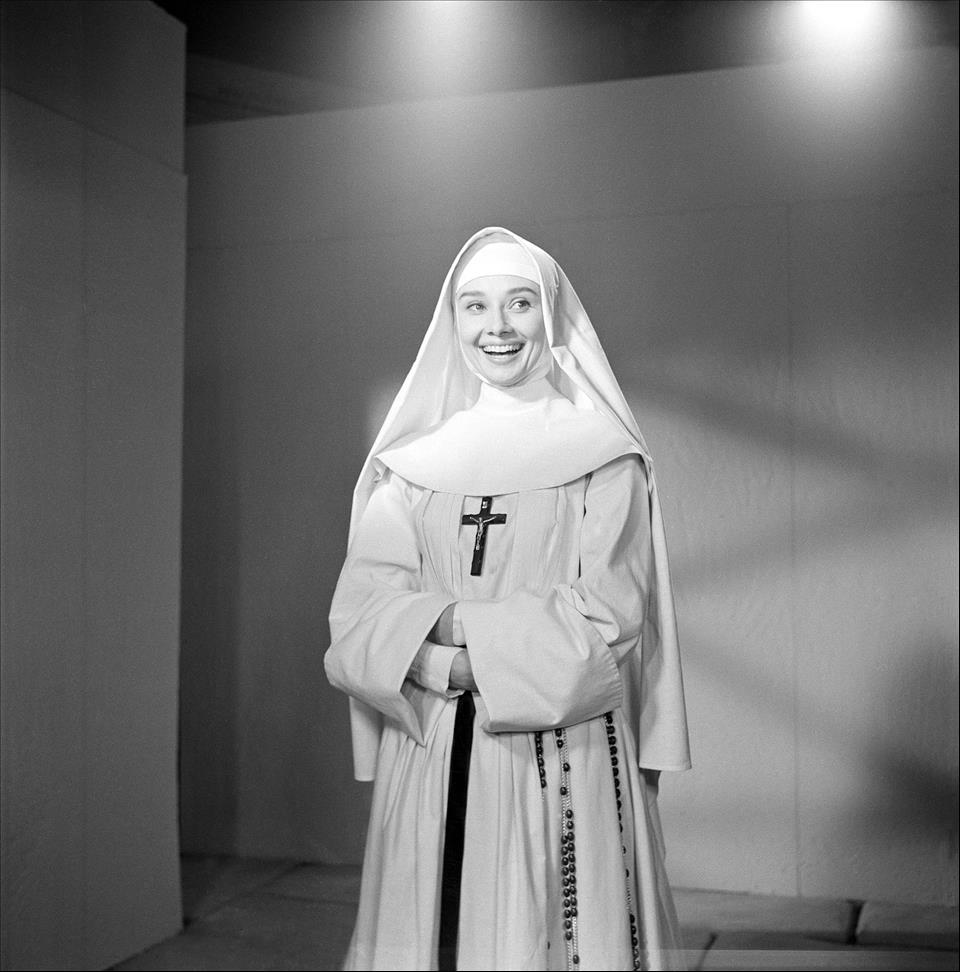
Nuns Are A Staple On The Hollywood Screen Even As They Disappear From Real Life. What's Behind Our Timeless Obsession?
Last year brought us The Nun II (following 2018's The Nun), The New Boy, Deliver Us and Sister Death. This year, we've had Immaculate and The First Omen. Most of this current crop are horror films or dark dramas – a long way from the wholesomeness of the postulant (or trainee-nun) Maria in the Sound of Music, the upbeat singing of Sister Act, or the knockabout comedy of Nuns on the Run (1990).
But away from the silver screen, we are seeing the disappearance of nuns.
Nuns are vanishing in two ways. Many no longer wear a habit, opting instead for conservative everyday clothing, a shift prompted by the modernising Second Vatican Council . Nuns now pass unrecognised in the community , rather than being marked out by a habit.
The other way is that there are simply not many nuns left, especially in the western world in countries such as the United States, and most of those who remain are in their 80s .
So why are we so perennially fascinated by nuns on film?
A dying vocationIn 2020, there were about 650,000 women in Catholic religious orders around the world – down 100,000 from just ten years earlier.
It was famously said of the Irish that every family had at least one nun in it : in Ireland, there were more than 13,000 nuns in the 1960s. There are now less than 4,000, and they have an average age of over 80.
Since 1965, the number of nuns in the United States has fallen by 65% . In Australia there were over 14,000 nuns in 1966 , but now only 3,500 .
But you would not notice that decline in cinema.
The meeting of nuns and horrorIn Immaculate, Sydney Sweeney battled depravity and defilement in an isolated convent. In Consecration, a young doctor finds murder and conspiracy in (once again) an isolated convent.
Nuns in horror films are not anything new.
Nuns have been characters in horror cinema since 1922 when the famous silent movie Haxen appeared.
The roots are even deeper and 17th and 18th century literature. Aphra Behn's The History of the Nun (1689) and Matthew Lewis's The Monk (1796) linked nuns with murder, bigamy, kidnap and satanism, among other themes.
Horror classics (and some not so classic) such as The Devils (1971), The Omen (1976, and remade in 2006), Silent Night, Deadly Night (1984) and The Killer Nun (1979) have kept nuns and horror together.
Why are nuns still so darkly fascinating, even though real nuns are now small groups of elderly women? And why are so many filmmakers turning to horror to tell stories about nuns?
One reason is the age-old fascination with the inner world and inner lives of nuns. While few religious sisters wear the dark habit, in cinema the habit is indispensable.
With their bodies encased in dark habits, and their lives enveloped in enclosed convents, voyeurism and horror find a natural meeting place in nuns.
The creative desire to look inside the cloistered world of nuns is not always sensationalist. The acclaimed Australian miniseries Brides of Christ (1991) was a sensitive account of the inner spiritual and institutional lives of nuns. But recent films like Consecration and Immaculate show filmmakers are fascinated by nuns as a source of exploitation, showing them as violated and sexual objects.
Narratives around nuns have shifted.
In the 1960s and 1970s, especially, nuns in popular culture were sunny and wholesome (such as Maria in The Sound of Music or Sister Bertrille in the 1960s sitcom The Flying Nun), or a reassuring presence (like the singing nun in 1974's Airport 1975).
In years since, the world has learned more about events that took place inside convents after survivors came forward and investigative journalists uncovered a range of scandals in America , Ireland , Australia and elsewhere.
These events were then dramatised in films such as The Magdalene Sisters (2002) and Philomena (2013), which mark a decisive turn away from wholesome and happy nuns to convents as places of abuse and neglect, especially of babies and young women.
This darker turn in nun films is based on the true horror of abuse, not the supernatural horrors of Consecration and Immaculate. But both types of horror – the reality of abuse and the fantasy of the supernatural – are at odds with what nuns should be: holy, spiritual and pure.
This contrast is irresistible to filmmakers and results in striking themes and visuals.
Some orders of nuns are becoming extinct – but for now they live on in our popular culture.
But what we see is disconnected from reality. Nuns in full habits and gothic convents in film are not like the plain clothed nuns of reality, who are more likely to be found in a community centre than a creepy old convent.
But these dark fantasies are deeply embedded in our cultural imagination and have endured despite drastic real world changes in the Church. The number of nuns continues to dwindle. It is quite possible that, in the future, the only nuns we will ever see are these cinematic sisters.

Legal Disclaimer:
MENAFN provides the
information “as is” without warranty of any kind. We do not accept
any responsibility or liability for the accuracy, content, images,
videos, licenses, completeness, legality, or reliability of the information
contained in this article. If you have any complaints or copyright
issues related to this article, kindly contact the provider above.


















Comments
No comment